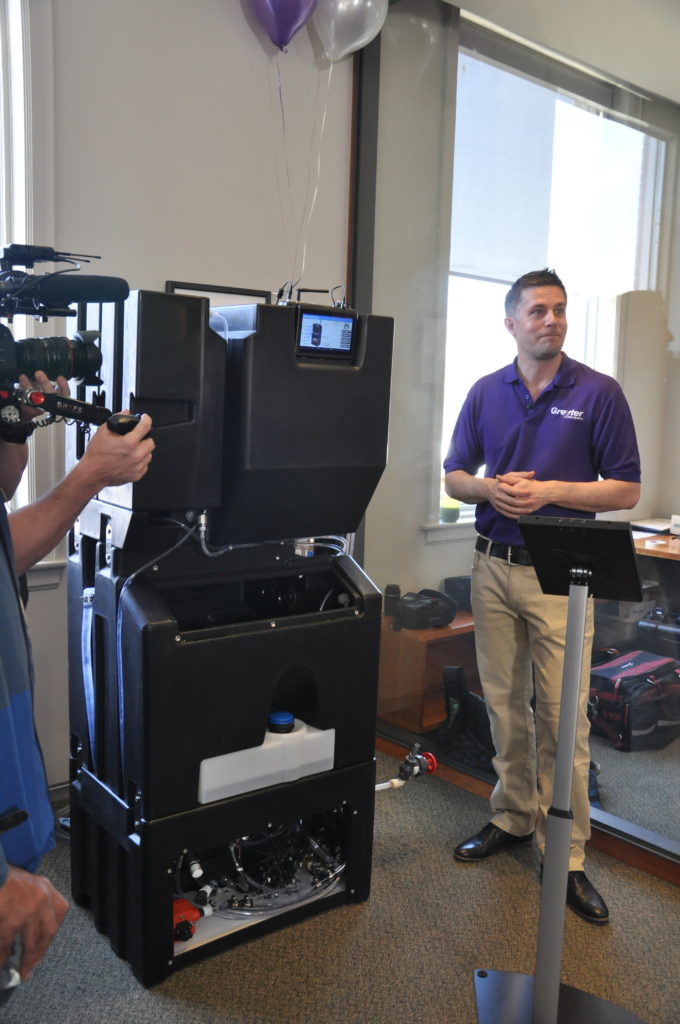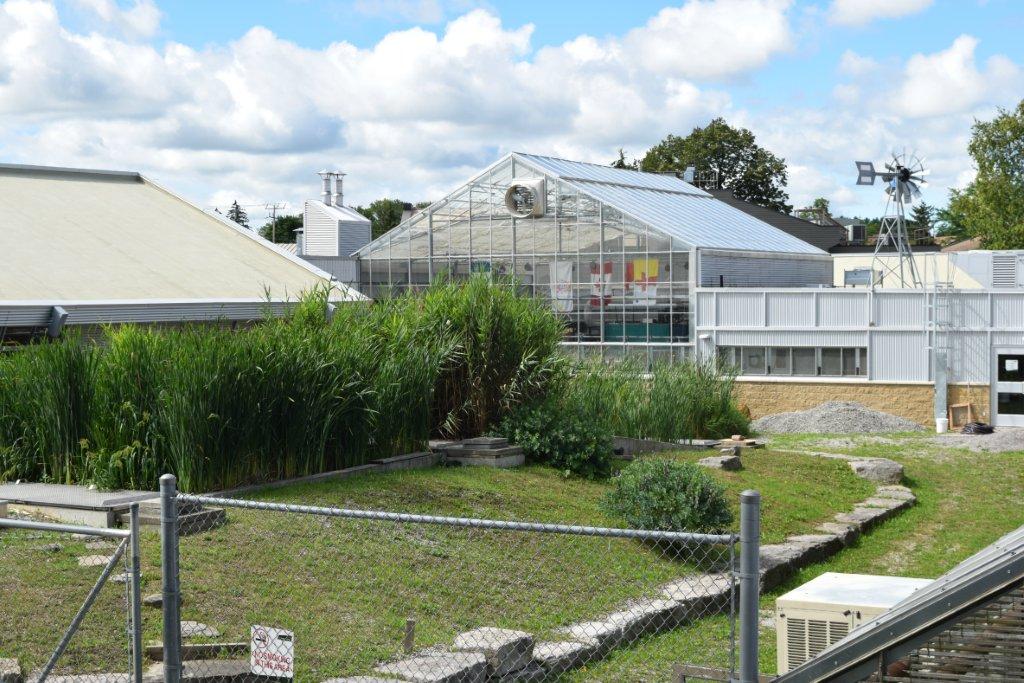After spending more than four-and-a-half years developing the key components of a new residential greywater-treatment system, Greyter Water Systems is in the home stretch of fine-tuning its technology.
“The process and components have been completed, and now we turn to field testing and final modifications before the rigorous six-month certification process,” Mark Sales, co-founder and chief executive of Toronto-based Greyter, says of the company’s new Greyter HOME water-recycling solution.
The final tweaks are being undertaken in collaboration with researchers at the Centre for Advancement of Water and Wastewater Technologies (CAWT) at Fleming College, one of the Southern Ontario Water Consortium’s (SOWC) 10 post-secondary member institutions.
“We had all of our processes identified in terms of how the Greyter HOME would filter, treat and disinfect greywater, but we developed a project with the CAWT whereby they could work with our research team on final adjustments, expedite testing and put demands on the system in preparation for certification,” says Sales.
The research project, funded by SOWC’s Advancing Water Technologies (AWT) Program, is aimed specifically at evaluating, optimizing and validating the Greyter HOME solution, designed to recycle shower and bath water so it can be reused to supply all the water typically needed to flush toilets.
“There seems to be a lot of market interest in places that need to reuse water or to treat non-potable sources of water,” says Brent Wootton, head of research at the CAWT and former chair of Ontario’s Water Technology Acceleration Project (WaterTAP). “Greyter has a technology that they are trying to get to the last stage so it can be fully commercialized,” he says.
Thanks in part to the AWT funding program, which supports Ontario water-sector research and development projects, Wootton and his research team are helping Greyter on its path to successfully commercializing the technology. In addition to a suite of scientists, engineers, technicians and technologists, the CAWT is providing expert knowledge on performance measures and quality assurance, and advanced research and lab facilities.
“They’re running expedited testing that we just couldn’t have done,” says Sales.
Greyter’s patent-pending HOME solution, which requires plumbing to be installed from bathrooms to the system, is designed to supply all of the water required for a typical household’s toilet flushing, thereby reducing indoor water consumption by 25-30%.

Greyter Water Systems Co-Founder John Bell with the Greyter HOME Solution. Copyright: Greyter Water Systems
Largely focused on water-reuse solutions for commercial buildings, Greyter faced some unique hurdles in creating a product for the residential market. While it was able to draw on some design features it already uses in its commercial applications, such as algorithms and a proprietary electronic water-management controller, it developed a new filtration and treatment technology and had to meet certain key parameters for use in homes.
Cost, size, reliability, energy efficiency and high water quality were all extremely important in designing the new technology, says Sales.
At a cost of around $3,500, Sales says the system can be added to new homes without having a considerable impact on builders. It also fits within Ontario financial models for home-appliance rental markets, he adds. For builders in major markets like California, which Greyter considers a key area due in part to population growth, drought issues and a focus on sustainability, a small footprint was required in order to maximize the amount of livable space in new homes. Like other home appliances such as furnaces and water heaters, the Greyter HOME solution is also designed to require minimal maintenance by homeowners and service providers.
As for water quality, the Greyter HOME solution is designed to meet a near-potable water-quality standard required in many major markets. In its collaboration with researchers at Fleming College, the company will soon put the technology through a stringent, six-month stress test for what is known as NSF 350 certification.
NSF, a U.S.-based health and safety organization, has developed design, construction and performance-requirements for onsite residential water-reuse treatment systems and has set water-quality requirements for the reduction of chemical and microbiological contaminants for non-potable water use. The certification process involves 26 weeks of continuous testing and doesn’t allow for any routine service and maintenance of the system during the testing period.
CAWT works with NSF to provide technology performance assessments and certifications and will conduct the testing, which will include running a simulated cocktail of shower and bath water through the system.
Collaborating with Wootton’s team with the backing of the AWT program has had some important advantages for Greyter as it advances its residential technology.
Aside from allowing the company to move much faster with development and testing than it could have on its own, Sales says CAWT researchers have brought fresh perspectives to the project.
“It’s nice to have other hands and eyes involved in your development,” he says. “They think differently and there’s been certain things that we’ve had to pivot on and think about because they’ve been brought up by the CAWT.”
Greyter’s openness to discussion, suggestions and new ideas has also been a highlight of the partnership for Wootton.
“We’re really free to just roll up our sleeves and wrestle with the company and the technology, and it’s a lot of fun,” Wootton says. “We get to just have honest conversations and figure out what’s working and what’s not, and how can we solve what’s not working.”
Both parties agree that funding programs such as AWT offer an important boost in getting new technologies to market. In striving for an innovation-based economy, Wootton sees a role for joint efforts in the private-sector, post-secondary sector and for government. “I think AWT is a good example of how it can all work successfully,” he says.
Sales says AWT fills a void in the water-innovation sector, by helping bridge the gap of final development to full-scale launch.
“It’s just been so timely for us,” he says.


